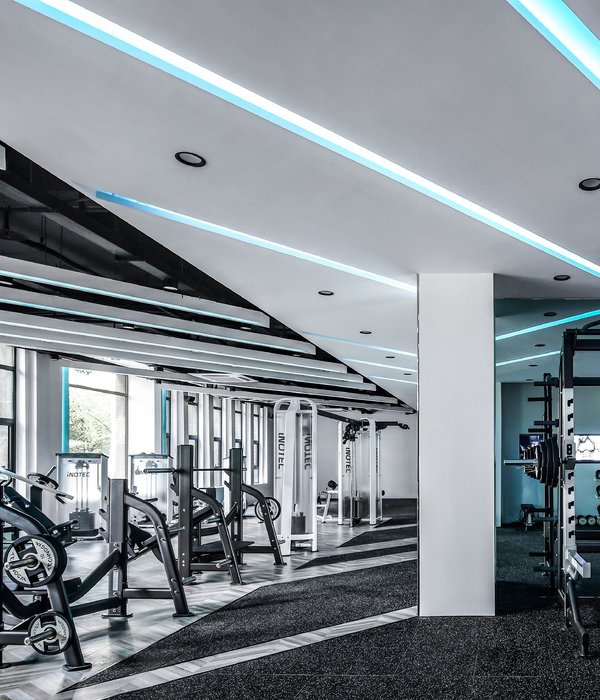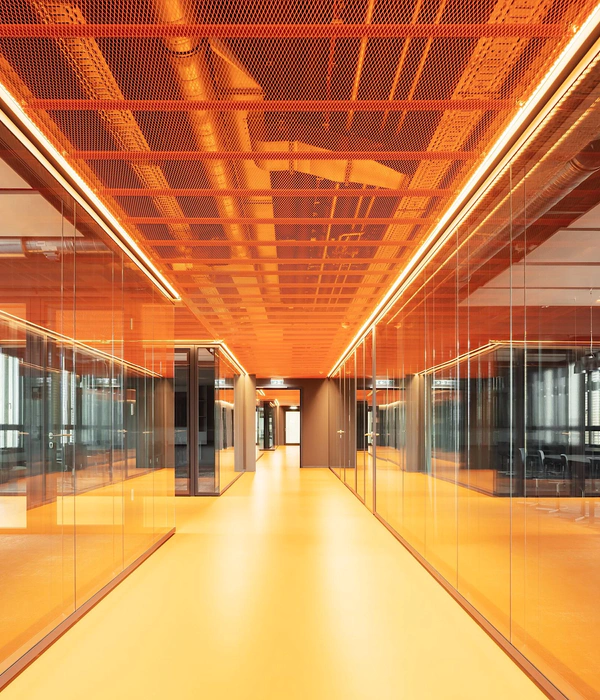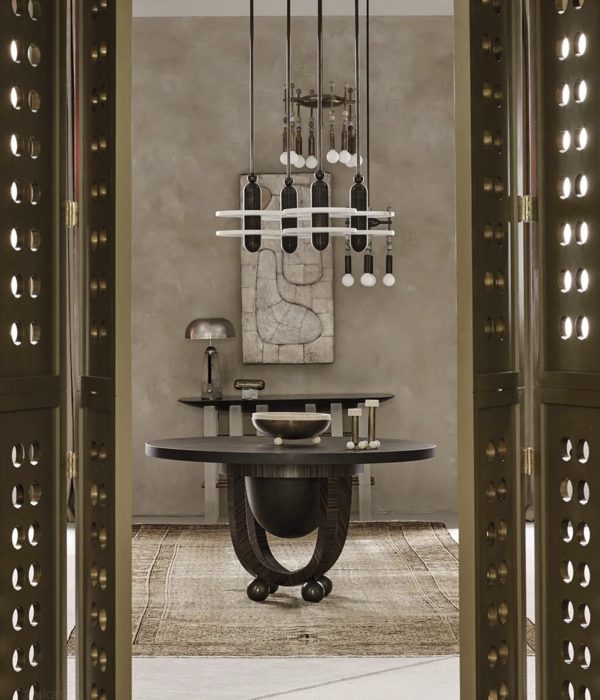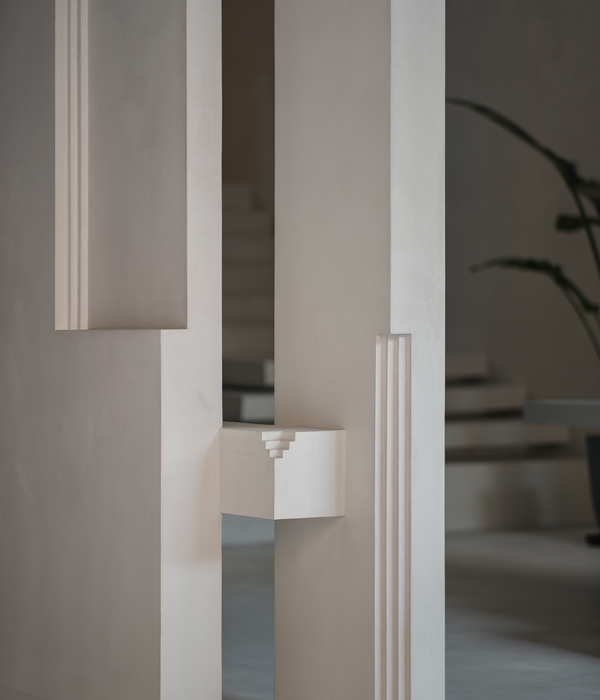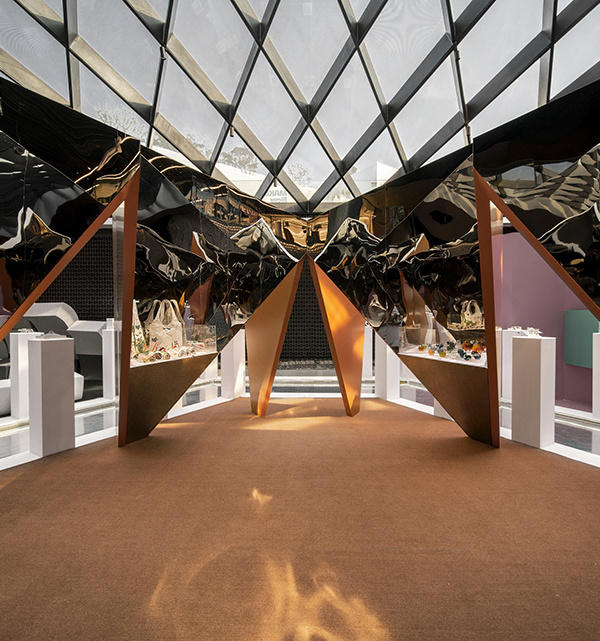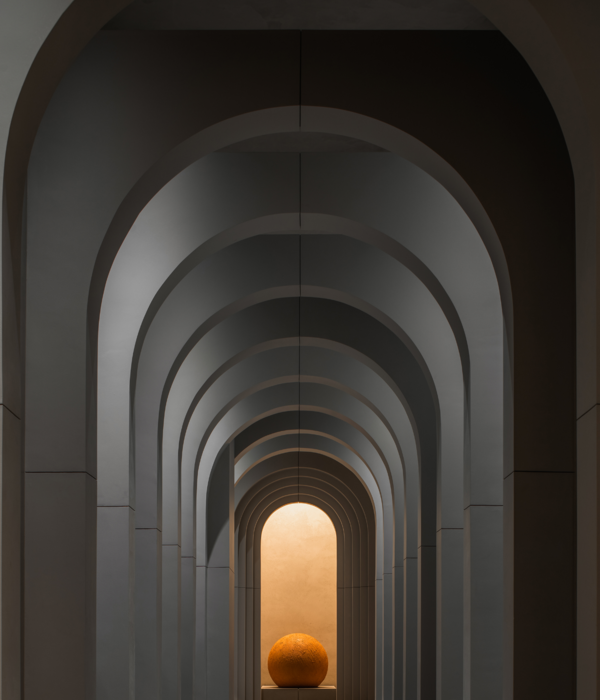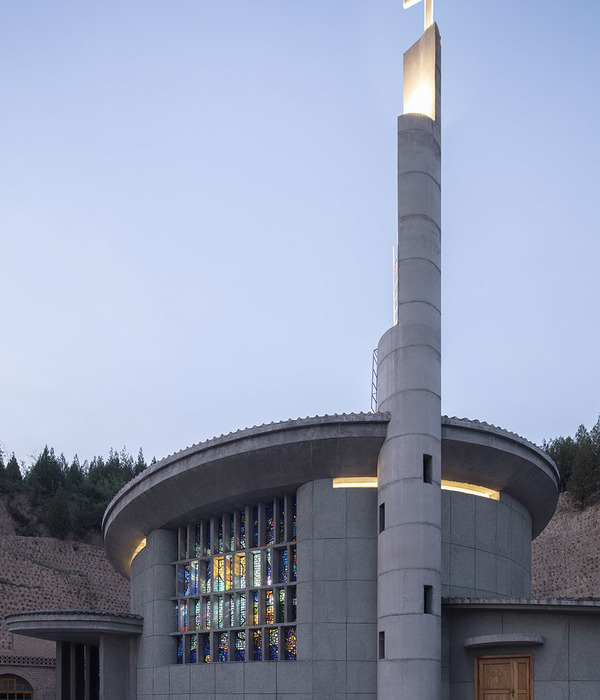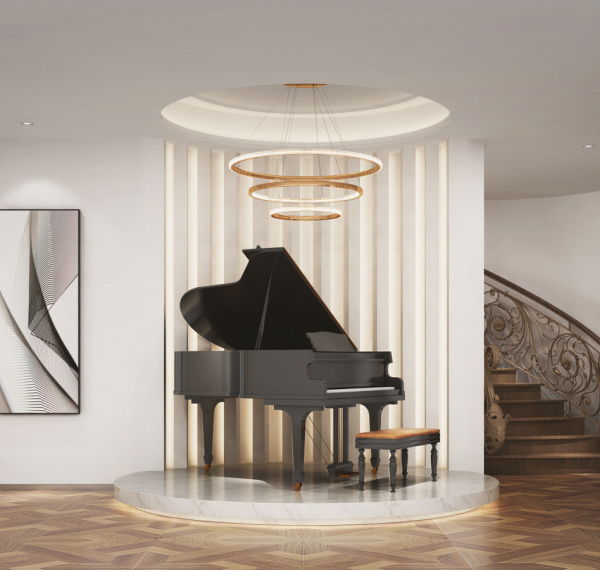▼项目视频,video©吴清山
浙江工业大学屏峰校区板球场作为全国建筑面积最大和浙江省内唯一的板球场地,以其别具中国特色的建筑形象和高水准国际赛事设计标准,受到国际板联和亚组委的肯定,在比赛期间,获得中国香港体育代表团团长霍启刚的点赞和好评。
The Asian Games Cricket Field at the Pingfeng Campus of Zhejiang University of Technology, being the largest in the nation and the only one in Zhejiang, with its distinctive Chinese architectural image and high-level international event design standards, has been recognized by the International Cricket Council and the Asian Games Organizing Committee. During the competition, it received praise and compliments from the Head of the Hong Kong Sports Delegation, Huo Qigang.
▼项目概览,project overview©吴清山
我们从“绿色、智能、节俭、文明”的办会主旨出发,在尊重专业的体育工艺要求的基础上,结合具有杭州特征的山水意向,通过简洁的形态、紧凑的空间布局、环保的建筑材料、可持续利用的场馆设施等方式,完成板球场的设计。
Starting with the principle of “green, intelligent, economical, and civilized” event management, while respecting the professional requirements of sports craftsmanship, and combining Hangzhou’s landscape intentions, we completed the design of the cricket field through simple forms, compact spatial layouts, environmentally friendly building materials, and sustainable use of venue facilities.
▼坐落于屏峰山麓,located near Pingfeng mountain©吴清山
项目概况
Project Overview
浙江工业大学屏峰校区亚运板球场项目位于浙江工业大学屏峰校区内,选址于原田径场地西侧,坐落于子午潮山国家森林公园屏峰山麓,毗邻学校图书馆,南侧为古运河路,北侧为上埠河路。项目建设用地面积49400㎡,新建场馆总建筑面积12689㎡,地上三层。
The Asian Games Cricket Field at the Pingfeng Campus of Zhejiang University of Technology is located on a 49,400 square meter site on the west side of the original track and field area. It is situated at the foot of the Ziwu Tide Mountain in the Ziwu Tide National Forest Park, adjacent to the school library, with the ancient Yunhe Canal Road to the south and Shangbu River Road to the north. The new venue has a total building area of 12,689 square meters spread across three floors above ground.
▼坐落于屏峰山麓,located near Pingfeng mountain©吴清山
大屋顶下的红灯笼
The Red Lantern under the Big Roof
一个时代的记忆,一个地方的文化,建筑是其中不可或缺的部分。我们希望借亚运这一盛大赛事,用建筑的语言向世界展现中国的传统文化。设计灵感来源于民间最常见的“红灯笼”,灯笼象征着团圆、喜庆,早已成为中国人的文化符号之一。以“红灯笼”为意向,打造一座具有杭州韵味的板球场,是我们献给杭州亚运的贺词。
An era’s memory and a place’s culture are integral parts of each other, where architecture plays an indispensable role. Through the grand event of the Asian Games, we want to use architecture to showcase China’s traditional culture to the world. The design inspiration comes from the most common “red lanterns” in the folk, symbolizing reunion and celebration, and has long been one of China’s cultural symbols. Taking the “red lantern” as the intention, we aimed to create a cricket field with the charm of Hangzhou as our tribute to the Hangzhou Asian Games.
▼建筑体快形似屋顶下的红灯笼,inspired by “red lanterns”©吴清山
"因天材,就地利",我们不希望建筑的介入扰动原有的场域秩序,根植于地域风土的建筑风貌,才能实现建筑与自然的有机统一。红砖是具有情感记忆的建筑语言,早已在数十年的光阴里凝炼成独特的“工大红”。我们采用工大经典的红砖(陶砖),并将它延用到建筑的空间形式与功能中,让建筑最大化地结合校园的文化底蕴与历史传承。所谓大巧若拙,红砖延用至今,其古朴厚重之感以及自然的粗犷肌理能够将人文历史的沉淀体现在建筑立面之上。
Using local materials according to local conditions, we don’t want the intervention of architecture to disrupt the original field’s order. The architectural style rooted in regional conditions can achieve the organic unity of architecture and nature. Red bricks are an emotionally memorable architectural language and have long been condensed into a unique “Gong Da Red” over decades. We used the classic red bricks of the university and extended them into the spatial forms and functions of the building, maximizing the integration of the building with the cultural heritage and historical heritage of the campus. The ancient simplicity and weighty sense of the red bricks, along with the rough texture, embody the cultural and historical sedimentation on the building facade.
立面采用工大经典的红砖(陶砖),used the classic red bricks of the university ©吴清山
同时,建筑建构了一个“大屋顶”,结合原有校区四坡顶形式与地块周边变化的角度,形成夸张的锐角形出挑。悬挑的屋檐,顺应板球场地的弧线,创造出丰富的檐下空间。同时,屋面设计斜面纹理以达到轻薄消隐的视觉效果。
Moreover, the architecture constructs a “big roof,” combining the original campus’s four-sloped roof form with the surrounding angles, forming an exaggerated sharp angle. The cantilevered eaves, following the curvature of the cricket field, create a rich space under the eaves. Simultaneously, the roof’s design uses inclined surface textures to achieve a light and thin visual effect.
悬挑的屋檐,cantilevered roof©吴清山
陶砖里的富春山居
“Rich Spring Residence in Ceramic Tiles”设计以“生态美学”为核心,从《富春山居图》汲取灵感,通过运用建筑的元素与语言,以及对传统山水画的分析与诠释,将山体的线条和棱角解构,并重新还原于建筑,寻求与自然对话和冥想的诗意场所,重建一种当代中国本土的建筑学。
▼从《富春山居图》汲取灵感,draws inspiration from the “Rich Spring Residence” ©AZUT
The design, centered around “ecological aesthetics,” draws inspiration from the “Rich Spring Residence” painting. It employs architectural elements, language, and an analysis of traditional landscape paintings to deconstruct the mountain’s lines and angles, restoring them in the construction. Seeking a poetic space for dialogue and contemplation with nature, it aims to reconstruct contemporary Chinese indigenous architecture.
▼将山体的线条和棱角解构,并重新还原于建筑,restoring mountain’s liens and angles in the construction©吴清山
建筑表面为双层结构,外侧是独特的“砖幕帘”,与建筑内墙之间间隔1.8米,建构利用陶砖强度高的优点,选用60mm×480mm×120mm、60mm×720mm×120mm为主要砖型尺寸,每块陶砖留多个圆孔,通过穿不锈钢管进行固定,构造安全且施工便捷。此外,通过拼砌出240mm×240mm和120mm×120mm两种孔洞,来模拟近景和远景的山峦。通过参数化设计手段,根据采光需求等级模拟出洞口排布,把《富春山居图》与内部功能需求完美结合在一起。多孔的“砖壳”、旋转的墙体和缝隙,使板球场对于校园空间没有侵略感,同时巧妙利用自然光线与光影变化,重新诠释自然,再现富春山水。
The building surface features a double-layer structure, with the outer layer being a unique “brick curtain” with a 1.8-meter gap between the inner walls. Leveraging the high strength of ceramic tiles, main brick sizes of 60mm×480mm×120mm and 60mm×720mm×120mm are used. Each tile retains multiple circular holes, fixed through stainless steel pipes, ensuring safety and facilitating construction. Additionally, two types of holes, 240mm×240mm and 120mm×120mm, are pieced together to mimic the close and distant landscapes of mountains. Using parametric design methods, the distribution of openings is simulated based on lighting requirements, perfectly integrating the “Rich Spring Residence” with internal functional needs. The porous “brick shell,” rotating walls, and gaps prevent the cricket field from feeling invasive in the campus space while cleverly utilizing natural light and shadow changes to reinterpret nature and reproduce the beauty of Rich Spring’s landscape.
通过孔洞来模拟近景和远景的山峦,using holes to mimic close and distant landscape©吴清山
设计以陶砖为笔,以光影为墨,旨在打造一个充满自然光线和通风的有趣空间,充分利用自然光线,而又避免阳光直射的负面影响,在建筑空间和立面上营造了丰富的叙事和体验。
The design, with ceramic tiles as the brush and light and shadow as the ink, aims to create an interesting space filled with natural light and ventilation, fully utilizing natural light while avoiding direct sunlight’s adverse effects. It creates a rich narrative and experience in both architectural space and façade.
▼充满自然光线和通风的有趣空间,an interesting space filled with natural light and ventilation©吴清山
可持续建筑的后亚运共生
Post-Asian Games Coexistence of Sustainable Architecture
基于校园内的亚运体育建筑,应该更注重它在校园语境中的多重可能,以前瞻性的视角将其融入整个校园生活中。同时,以共享开放的理念贯穿整个建筑的生命周期,使其作为联系文化与生活的纽带,赋予体育建筑特有的公共服务价值。
Based on the campus’s Asian Games sports buildings, it should focus more on its multiple possibilities within the campus context, integrating it into the entire campus life from a forward-looking perspective. Embracing a philosophy of shared openness throughout the building’s life cycle, it serves as a link between culture and life, endowing sports buildings with unique public service value.
以前瞻性的视角将其融入整个校园生活,focus more on its multiple possibilities within the campus context©吴清山
该建筑作为全生命周期与多功能用途而设计。亚运赛事期间,球场用于板球比赛与赛事转播;亚运会结束后,该建筑将继续作为大学各种活动的中心,服务于学校与社会。赛后将保留一层原有的的赛事功能与室外场地,满足体育教学需求并服务于赛事活动。此外,建筑内部多个会议接待厅和报告厅,赛后将作为学校的会议中心和剧场使用。
The building is designed for a full life cycle and multifunctional use. During the Asian Games, the field was used for cricket matches and event broadcasting. After the Games, it will continue to serve as the center for various university activities, catering to the needs of the school and society. Post-Games, it will retain the original event functions and outdoor spaces on one level, meeting the demands of sports education and event activities. Additionally, multiple conference reception halls and lecture halls inside the building will serve as the school’s conference center and theater post-Games.
接待厅和报告厅,reception halls and lecture halls ©吴清山
主体建筑与东侧运动场看台围合成一条12米宽的内街,巧妙地公共空间开放,与大学校园有机关联,赛后将改造成步行街区,成为学生创意中心。斜插的二层平台串联东西两大看台,看台四个角落都设有景观台阶,为师生提供学习、交流、休闲和观景的场所。
The main building, along with the east-side sports field grandstands, forms a 12-meter-wide inner street, cleverly opening public spaces and organically connecting with the university campus. Post-Games, it will be transformed into a pedestrian zone, becoming a creative center for students. Slanted second-floor platforms connect the east and west grandstands, with scenic steps at all four corners, providing spaces for learning, exchange, leisure, and scenic views for teachers and students.
▼巧妙地公共空间开放,cleverly opening public spaces ©吴清山
更进一步地,亚运板球场不仅是一个物理空间,还是我们对新时代新发展理念下体育建筑设计的思考,如何让体育赋能城市并助力健康城市建设,贯彻落实二十大加快建设体育强国的要求。我们希望此次板球场的建设经验,可以成为杭州亚运场馆建设的“亚运遗产”。
Furthermore, the Asian Games Cricket Field is not just a physical space but also our contemplation on sports architecture design under the new era’s development concepts. It explores how sports can empower cities and contribute to healthy urban development, aligning with the requirements to accelerate the construction of a strong sports nation. We hope the experience gained from constructing the cricket field can become an “Asian Games legacy” in Hangzhou’s venue construction.
夜景,night view©吴清山
▼场地轴测,site axonometric© AZUT
场地平面,site plan©AZUT
一层平面,ground floor plan©AZUT
▼二层平面,first floor plan©AZUT
▼三层平面,second floor plan©AZUT
▼屋顶平面,roof plan©AZUT
▼立面1,elevation 1©AZUT
▼立面1,elevation 1©AZUT
▼剖面,section©AZUT
{{item.text_origin}}


